Imagine a world where you could indulge in your favorite comfort foods without the guilt, where pizza nights and creamy mashed potatoes were no longer off-limits. This isn’t a fantasy; it’s the magic of cauliflower. This versatile vegetable, often overshadowed by its more colorful cousins, is a culinary chameleon, capable of transforming into a myriad of diabetes-friendly dishes that will delight your taste buds and nourish your body.

Cauliflower: The Unexpected Superfood
Cauliflower belongs to the cruciferous vegetable family, a group known for its potent health benefits. For people with diabetes, it’s a true superhero in disguise.
Why Cauliflower is a Diabetic’s Best Friend
- Low Glycemic Index: Cauliflower has a low glycemic index (GI), meaning it releases sugar into the bloodstream slowly. This helps prevent blood sugar spikes and keeps your energy levels stable. A study published in the journal Nutrients in 2019 found that consuming low-GI foods can significantly improve blood sugar control in people with type 2 diabetes.
- Fiber Powerhouse: Fiber is essential for managing diabetes. It slows down the absorption of sugar, promotes gut health, and helps you feel full and satisfied. Cauliflower is an excellent source of fiber, providing a substantial portion of your daily needs in every serving.
- Nutrient-Rich: Cauliflower is packed with vitamins and minerals like vitamin C, vitamin K, folate, and potassium. These nutrients play vital roles in overall health, from boosting immunity to supporting heart health.
4 Delicious Ways to Transform Cauliflower
Let’s explore the exciting ways you can transform this humble vegetable into mouthwatering, diabetes-friendly dishes.
1. Cauliflower Rice: The Ultimate Base

Cauliflower rice is a game-changer for anyone following a low-carb or diabetic lifestyle. It’s incredibly easy to make:
- Prep the Cauliflower: Cut a head of cauliflower into florets.
- Rice It Up: Pulse the florets in a food processor until they resemble rice grains. Be careful not to over-process, or you’ll end up with cauliflower mush!
- Cook It: Sauté the cauliflower rice in a pan with a little olive oil until tender-crisp, or use it raw in salads and cold dishes.
Here are some delicious ways to use cauliflower rice:
- Stir-fries and Curries: Cauliflower rice soaks up the flavors of sauces and spices beautifully. Try it in a chicken and vegetable stir-fry for a quick and healthy meal.
- Fried “Rice” Dishes: Craving Chinese takeout? Cauliflower rice is a fantastic substitute for traditional rice in your favorite fried rice recipes.
- Risotto Reimagined: You can even make a creamy risotto using cauliflower rice. Cook it slowly with broth, allowing it to absorb the liquid and develop a luscious texture.
2. Cauliflower Mash: Comfort Food, Redefined

Mashed potatoes are a beloved comfort food, but their high carbohydrate content can be a challenge for people with diabetes. Cauliflower mash offers a creamy, dreamy alternative that’s just as satisfying.
- Cook the Cauliflower: Steam or boil cauliflower florets until tender.
- Mash It Up: Mash the cooked cauliflower with a little butter, cream cheese, or Greek yogurt.
- Season to Perfection: Add salt, pepper, and your favorite herbs for a delicious side dish.
Cauliflower mash is incredibly versatile:
- Sneak in More Veggies: Its mild flavor blends seamlessly with other ingredients, making it a great way to add extra vegetables to casseroles, soups, and even shepherd’s pie.
- Nutritional Upgrade: Compared to mashed potatoes, cauliflower mash is lower in carbohydrates and calories and higher in fiber and nutrients.
3. Roasted Cauliflower: A Flavor Explosion

Roasting cauliflower brings out its natural sweetness and creates a delightful nutty flavor.
- Prep the Cauliflower: Cut a head of cauliflower into florets.
- Season and Toss: Toss the florets with olive oil, salt, pepper, and your favorite spices like garlic powder, paprika, or cumin.
- Roast to Perfection: Roast in a preheated oven at 400°F (200°C) until tender and slightly browned.
Roasted cauliflower can be enjoyed in many ways:
- Versatile Side Dish: Serve it alongside any meal.
- Grain Bowl Base: Use it as a base for hearty and flavorful grain bowls.
- Cauliflower Steaks: For a more substantial meal, try roasting thick slices of cauliflower (about 1 inch thick) brushed with olive oil and herbs until tender. These “steaks” can be served with a side of roasted vegetables or a fresh salad.
4. Cauliflower Pizza Crust: Guilt-Free Indulgence

Pizza night just got a whole lot healthier with cauliflower pizza crust. Here’s how to make your own:
- Make Cauliflower Rice: Follow the instructions above to make cauliflower rice.
- Cook the Rice: Sauté the cauliflower rice in a pan over medium heat until the moisture evaporates. This is crucial to prevent a soggy crust.
- Combine and Bind: In a bowl, combine the cooked cauliflower rice with an egg, about 1/2 cup of shredded mozzarella cheese, and your favorite seasonings.
- Form the Crust: Press the mixture onto a baking sheet lined with parchment paper, forming a thin crust.
- Pre-bake: Bake the crust in a preheated oven at 400°F (200°C) for about 15 minutes, or until it starts to firm up.
- Add Toppings and Bake: Add your favorite pizza toppings and bake for another 10-15 minutes, or until the cheese is melted and bubbly.
Cauliflower pizza crust offers endless possibilities:
- Topping Variety: Load it up with your favorite vegetables, lean protein, and a sprinkle of cheese.
- Sauce Creativity: Experiment with different sauces, like pesto or a white garlic cream sauce.
Beyond the Basics: More Cauliflower Creations

Cauliflower’s versatility extends beyond these four classic preparations.
After mastering cauliflower rice, I was eager to explore other ways to use this versatile vegetable. I stumbled upon a recipe for cauliflower gnocchi and was instantly intrigued. These light and fluffy dumplings, made with cauliflower, eggs, and a touch of Parmesan cheese, were a revelation. They were just as satisfying as traditional potato gnocchi but with a fraction of the carbs.

Another delightful discovery was cauliflower tabbouleh. This refreshing salad, typically made with bulgur wheat, gets a healthy makeover with finely chopped cauliflower florets. Combined with fresh herbs, tomatoes, and a lemon vinaigrette, it’s a perfect side dish for any occasion.

And who can resist crispy cauliflower fritters? These bite-sized snacks are perfect for satisfying those crunchy cravings. Simply combine grated cauliflower with eggs, cheese, and your favorite seasonings, then drop spoonfuls into hot oil and fry until golden brown.
Tips for Cauliflower Success
- Don’t Overcook: Cauliflower can easily become mushy if overcooked. Aim for a tender-crisp texture when roasting or steaming.
- Flavor Boost: Cauliflower has a mild flavor, so don’t be afraid to experiment with bold spices and seasonings.
- Embrace Creativity: Think beyond the traditional uses of cauliflower. Its versatility allows for endless culinary creations.
My Cauliflower Revelation
I used to be one of those people who turned their nose up at cauliflower. It seemed bland and uninspiring. But my diabetes diagnosis prompted me to explore new culinary horizons.
My first attempt at cauliflower rice was a revelation. It was light, fluffy, and absorbed the flavors of my stir-fry sauce perfectly. From there, I ventured into cauliflower mash, roasted cauliflower with garlic and herbs, and even a surprisingly delicious cauliflower pizza crust.
The more I cooked with cauliflower, the more I appreciated its versatility and ability to transform into a myriad of dishes. It became my secret weapon for creating healthy, satisfying meals that didn’t spike my blood sugar.
Cauliflower has not only revolutionized my cooking but also empowered me to take control of my health. It’s a reminder that healthy eating doesn’t have to be restrictive or boring. With a little creativity, even the most unassuming vegetables can become culinary stars.
Cauliflower: Your Partner in Wellness
Cauliflower is more than just a vegetable; it’s a versatile ingredient that can help you create delicious, diabetes-friendly meals without sacrificing flavor or satisfaction.
So, embrace the power of cauliflower and unlock a world of culinary possibilities. Experiment with different recipes, explore new flavors, and discover the joy of healthy eating. Your taste buds and your body will thank you.
References
- Effect of a Low Glycemic Index Diet on Glycemic Control and Cardiovascular Risk Factors in Type 2 Diabetes Mellitus: A Meta-Analysis of Randomized Controlled Trials.
- The Impact of Dietary Fiber on Gut Microbiota in Patients with Type 2 Diabetes Mellitus: A Review.
- Cruciferous Vegetables and Human Cancer Risk: Epidemiologic Evidence and Mechanistic Basis.
- Sulforaphane Improves Hepatic Glucose Production and Insulin Resistance in Diabetic Rats.
- Molecular Nutrition & Food Research, 2016





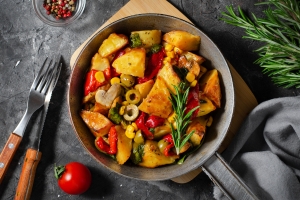
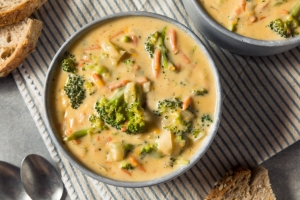

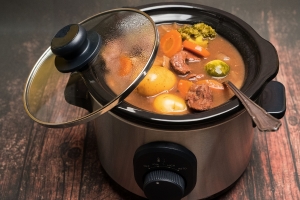
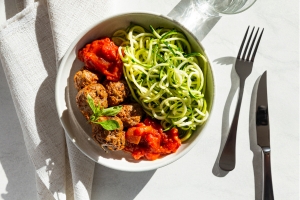
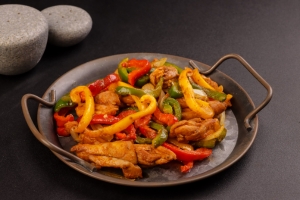
8 Responses
Okay, I’ll admit, the title got me. “Secret Weapon”? Sounds a bit dramatic, don’t ya think? I mean, it’s cauliflower, not a magic wand. I’m all for healthy eating, and I know I need to watch my carbs, but cauliflower pizza crust? I’m skeptical. Can it really taste like pizza? And is it really that much better than just having a small slice of regular pizza once in a while? Also, you mention a study about low-GI foods and blood sugar, but you didn’t link to it. I’d like to read it for myself. I’m not saying cauliflower is bad, but let’s be real, it’s not going to make me forget about real mashed potatoes anytime soon! 😜
Hey Debra, thanks for your comment and for being honest! I totally get the skepticism – cauliflower pizza does sound a bit out there. But trust me, it’s surprisingly good! It’s not exactly like traditional pizza, but it definitely satisfies that pizza craving without the carb overload. And you’re right, moderation is key. If you can enjoy a small slice of regular pizza without it messing with your blood sugar, go for it! As for the study, you’re right, I should have linked it! I mentioned many studies at the end of the article under the “Resources” section, the first study in the list is the one you are looking for. It’s all about finding what works for you and your body. And hey, maybe with a little experimentation, you’ll find a cauliflower mash recipe that gives those real mashed potatoes a run for their money! 😉 Thanks for keeping it real!
I’m intrigued by the cauliflower gnocchi. Never heard of that before! But is it really diabetes-friendly if it has eggs and Parmesan cheese? Those have fat and calories, you know. And how does it compare, carb-wise, to regular gnocchi? Also, the article talks a lot about how great cauliflower is, but what about the downsides? I’ve heard it can cause, ahem, gas. And, if I’m being honest, preparing it seems like a lot of work. Chopping, ricing, roasting… Is it really worth all the effort? I’m a busy mom, I don’t have time for complicated recipes!
Hi Emilia, great questions! The cauliflower gnocchi is a game-changer, for real! Yes, it has eggs and Parmesan, but remember, we’re focusing on carbs here. Compared to traditional potato gnocchi, the cauliflower version is much lower in carbs, which is the key for managing blood sugar. And those ingredients add flavor and help bind the gnocchi together. As for the, ahem, gas, yes, cauliflower can have that effect on some people. It’s due to the fiber content. Starting with small portions and gradually increasing your intake can help your body adjust. And regarding the effort, I hear you! It does take a bit more work than opening a box of pasta, but I think it’s worth it. Maybe try making a big batch of cauliflower rice on the weekend and freezing it in portions? That way, you’ll have it ready to go for quick weeknight meals. There are also many ready-to-use products in many stores nowadays, which will save you time and effort! You can also add anti-gas spices like cumin and fennel to your cauliflower dishes, it really helps! Hope that helps! Let me know if you give the gnocchi a try!
This article is making me rethink my whole relationship with cauliflower! I’ve always thought of it as that boring, bland veggie my mom used to boil to death. LOL! But a pizza crust made out of cauliflower? That’s wild! I’m intrigued, but also a little skeptical. Does it actually taste like pizza crust? And is it really sturdy enough to hold toppings? Also, you mention that cauliflower is a good source of fiber, but how much is in, say, a cup of cauliflower rice compared to a cup of regular rice? I’m trying to get my husband on the low carb train with me, so I need some hard facts to convince him.
Hi Aurora! I’m so glad to hear I might be converting you to a cauliflower fan! I totally understand your skepticism about the pizza crust. It’s not exactly the same as a traditional crust, but it definitely satisfies that pizza craving. It has a slightly nutty, savory flavor, and if you pre-bake it well, it should be sturdy enough to hold your favorite toppings. Just don’t overload it! As for the fiber content, 1 cup of cooked cauliflower rice has about 3 grams of fiber, while 1 cup of cooked white rice has less than 1 gram. Brown rice has a little more, around 3.5 grams, but cauliflower is still a great low-carb, high-fiber option. Hopefully, that info will help win over your husband!
I’m always looking for new ways to incorporate veggies into my diet, and this article has definitely given me some ideas. But I have a picky eater at home (my daughter!), and I’m not sure she’d be thrilled about cauliflower showing up on her plate, even in disguise. Any tips for sneaking it into meals without causing a riot? Also, I’m a bit confused about the cauliflower mash. You mention adding cream cheese or Greek yogurt. Wouldn’t that add a lot of fat and calories? Are there any lighter alternatives? I’m trying to eat healthy, but I don’t want to sacrifice flavor. It’s a struggle, you know?
Hi Manon! I hear you on the picky eater struggle! One trick for sneaking cauliflower into meals is to finely grate it and mix it into ground meat dishes, like meatballs or meatloaf. You can also puree cooked cauliflower and add it to sauces or soups – it adds a creamy texture without being noticeable. As for the cauliflower mash, you’re right, cream cheese and Greek yogurt do add some fat and calories. But they also add creaminess and flavor! Lighter alternatives include a little bit of milk (dairy or non-dairy), a touch of butter, or even just some chicken broth. You can also experiment with herbs and spices to boost the flavor without adding extra fat. It’s all about finding that balance between healthy and delicious!